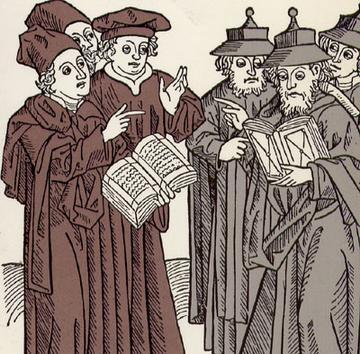In response to recent disciplinary actions by the Church of Jesus Christ of Latter-day Saints, supporters of those being disciplined have complained that the charge of apostasy is inaccurate because, they assert, the individuals and the organizations created by them have not taught any false doctrines or acted in opposition to the prophet or the Church.
They insist that all they are doing is asking questions. So, what false doctrine can they possibly be teaching?
This is my attempt to answer that important question.
At the outset, let’s immediately dispense with the notion that “asking questions” is always unambiguously innocent and unassuming.
Most people understand that questions can be asked not just to acquire information but also to manipulate or oppose. This is abundantly clear in the scriptures. Many of the the questions posed to Jesus or the prophets came from pharisees, lawyers, scribes and others whose intent was not to learn but to control either Jesus or the perception of Jesus by others.
There is a difference between looking for answers and asking questions to which you have already decided the answer.
So, it isn’t enough just to say, “we’re only asking questions.” You can be teaching false doctrines and opposing church leaders by asking questions. The motivations for asking, the underlying assumptions behind the questions, and the manner in which the questions are asked are all essential information for evaluating what kind of questioning is happening.
And it is often in the underlying assumptions behind the questions and actions that we find the false doctrines that are being taught. You can be selling a particular viewpoint even if it is not always explicitly stated.
We spend so much time arguing about the issues and questions on the surface, when the real point of controversy is in the underlying framework upon which the questions and interpretations are predicated.
The false doctrine that underpins the actions of dissident groups is a conceptual model of the Church, its authorities, and its operation that is incompatible with the model that the Church and its authorities teach about themselves.
The teachings of the highest authorities of the Church throughout the history of the Restoration present a remarkably consistent model of what the Church is, what prophets are, and how the Church is meant to operate.
Rather than attempt to summarize the model here, I refer you to the extensive selection of teachings from the prophets themselves in the official Teachings of the Presidents of the Church books linked in my previous post:
This conceptual model of the Church is the doctrine of the Church that dissident groups disbelieve, reject, and oppose.
They offer instead a competing, alternative model for the Church.
I won’t attempt a comprehensive description of this alternate model either. It can be readily discerned in the many online conversations and blog posts that dissidents write in defense of their actions and their doctrine. Some common points of this doctrine include: that they don’t see the church or the church leaders as their superiors; they see them as equals, or even inferior because the leaders are “old” and behind the times. When there is a conflict between what they apprehend to be God’s will and what their church leaders are saying, their own view of God’s will always trumps what the prophets say. They emphasize the fallibility of priesthood leaders and repeat a common liturgy of perceived errors by past church authorities to justify rejection of current teachings. In their model, being made to feel loved and accepted trumps order, obedience, and authority.
I am not going to argue the merits of these two competing models here. My views on the subject are well established. Dissidents see the framework the Church teaches as a form of idolatrous leader worship. I see the framework they teach as a dangerous form of spiritual anarchy that leaves them open to deception by false brethren and by false spirits. I have previously written at length about the intersection between prophetic authority and fallibility in defense of the doctrine of the church and the authority of the prophets and apostles.
The point is that by their actions these groups are teaching a doctrine of what the church is that is contrary to what the church teaches about itself.
I invite you to thoroughly read the selections of teachings of the prophets to which I previously linked, as well as all of the sermons delivered by the Apostles of the Church in the General Conferences of the last decade and beyond. Take a good look at what they have said and what they are saying and the model of what the Church is that they teach. Compare their teachings to the things that dissident groups are saying in their forums and blog posts and facebook pages.
They are not the same. The models are different. The doctrines are different.
It is up to you to decide whether you believe the doctrine taught by the prophets and apostles or the doctrine of the dissidents.
You know that I support, trust, and follow the authorities of the Church. I hope you will join me.



3 Responses to Beware the Leaven of the Dissidents